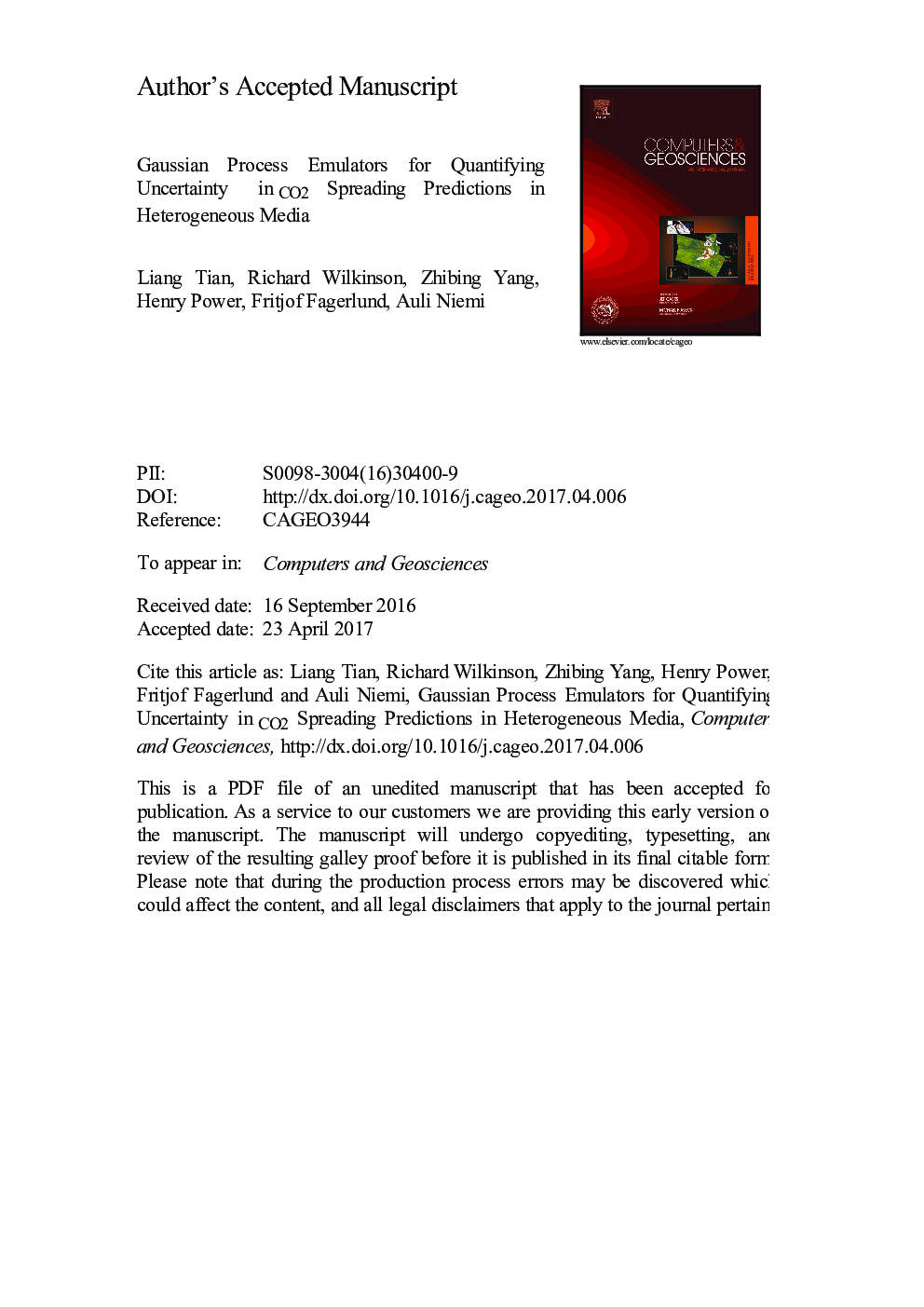| Article ID | Journal | Published Year | Pages | File Type |
|---|---|---|---|---|
| 4965381 | Computers & Geosciences | 2017 | 26 Pages |
Abstract
We explore the use of Gaussian process emulators (GPE) in the numerical simulation of CO2 injection into a deep heterogeneous aquifer. The model domain is a two-dimensional, log-normally distributed stochastic permeability field. We first estimate the cumulative distribution functions (CDFs) of the CO2 breakthrough time and the total CO2 mass using a computationally expensive Monte Carlo (MC) simulation. We then show that we can accurately reproduce these CDF estimates with a GPE, using only a small fraction of the computational cost required by traditional MC simulation. In order to build a GPE that can predict the simulator output from a permeability field consisting of 1000s of values, we use a truncated Karhunen-Loève (K-L) expansion of the permeability field, which enables the application of the Bayesian functional regression approach. We perform a cross-validation exercise to give an insight of the optimization of the experiment design for selected scenarios: we find that it is sufficient to use 100s values for the size of training set and that it is adequate to use as few as 15 K-L components. Our work demonstrates that GPE with truncated K-L expansion can be effectively applied to uncertainty analysis associated with modelling of multiphase flow and transport processes in heterogeneous media.
Keywords
Related Topics
Physical Sciences and Engineering
Computer Science
Computer Science Applications
Authors
Liang Tian, Richard Wilkinson, Zhibing Yang, Henry Power, Fritjof Fagerlund, Auli Niemi,
